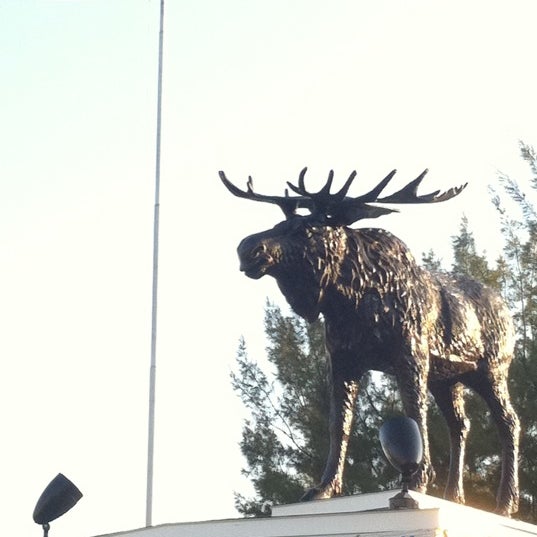
While Mooseheart began as a school, it soon grew to become a small incorporated village and hub of the organization, housing the headquarters of the LOOM as well as the Women of the Moose. Mooseheart was dedicated on July 27, 1913. The name "Mooseheart" had been adopted for the school at the suggestion of Ohio Congressman and Supreme Council member John Lentz by a unanimous joint meeting of the Supreme Council and Institute Trustees on Feb. Negotiations for the purchases were held in January and February 1913, and legal possession of the property was taken on March 1. The leadership also wished to buy additional real estate to the west and north owned by two other families, for a total of 1,023 acres. It was close to the Fox River, two railway lines and the (then dirt) Lincoln Highway. Brookline was a dairy farm near Batavia, Illinois. On December 14, 1912, the leaders of the organization decided to purchase the 750-acre Brookline Farm. It was eventually agreed that the center should be located somewhere near the center of population, adjacent to both rail and river transportation and within a day's travel to a major city. For months offers came in and a number of meetings were held regarding the project. Mooseheart and Moosehaven Īt the 1911 convention in Detroit, Davis, the "Director General" of the Order, recommended that the LOOM (Loyal Order Of Moose) acquire property for an "Institute", "School" or "College" that would be a home, schooling, and vocational training for the orphans of LOOM members. Officials at Moose International took action and revoked the charter of the Moose Lodge. In 1994, a Moose Lodge in Hagerstown, Maryland, denied membership based on race. The case was ultimately appealed to the United States Supreme Court, which ruled that Irvis lacked standing to sue based on membership and that state was not involved in the discriminatory guest practices to qualify as a state action prohibited by the Fourteenth Amendment. A Pennsylvania court ruled in Irvis' favor.
#ROYAL ORDER OF THE MOOSE LICENSE#
Irvis sued the Pennsylvania Liquor Control Board in federal court, arguing that the issuance of a liquor license to an organization with racially discriminatory policies constituted an illegal state action. The lodge dining room refused to serve Irvis on account of his race. Leroy Irvis, an African-American member of the Pennsylvania House of Representatives, was invited to visit a lodge in Harrisburg by a member as a guest. It is a well known fact that our membership is restricted to the Caucasian race.ĭan Barabo, Harrisburg lodge president The National Moose Lodge bylaws restricted membership in this men's club to Caucasians. He was quite successful, and the Order grew to nearly half a million members in 1,000 lodges by 1912. Davis and a group of organizers set out to recruit members and establish lodges throughout the US and Canada. After giving a rousing address to the seven delegates of the 1906 Moose national convention, he was appointed "Supreme Organizer" of the Order. He saw the Order as a way to provide a social safety net for a working class membership, using a low annual membership fee of $10–$15 (equivalent to $300–$450 in 2021). Davis was a Welsh immigrant who had come to the US as a youth and worked as an iron puddler in the steel mills of Pennsylvania and an active labor organizer (he later became Secretary of Labor in the Harding administration). Davis became the 247th member of the Order.

In the fall of 1906 the Order had only the two Indiana lodges remaining. Stevens was compiling his Cyclopedia of Fraternities in the late 1890s, he was unable to ascertain whether it was still in existence.

Wilson himself was dissatisfied and left the order of the Moose before the turn of the century. Louis, Missouri, and Crawfordsville and Frankfort, Indiana. Originally intended purely as a men's social club, lodges were soon founded in Cincinnati, Ohio, St. The Loyal Order of Moose was founded in Louisville, Kentucky, in the spring of 1888 by Dr.


 0 kommentar(er)
0 kommentar(er)
